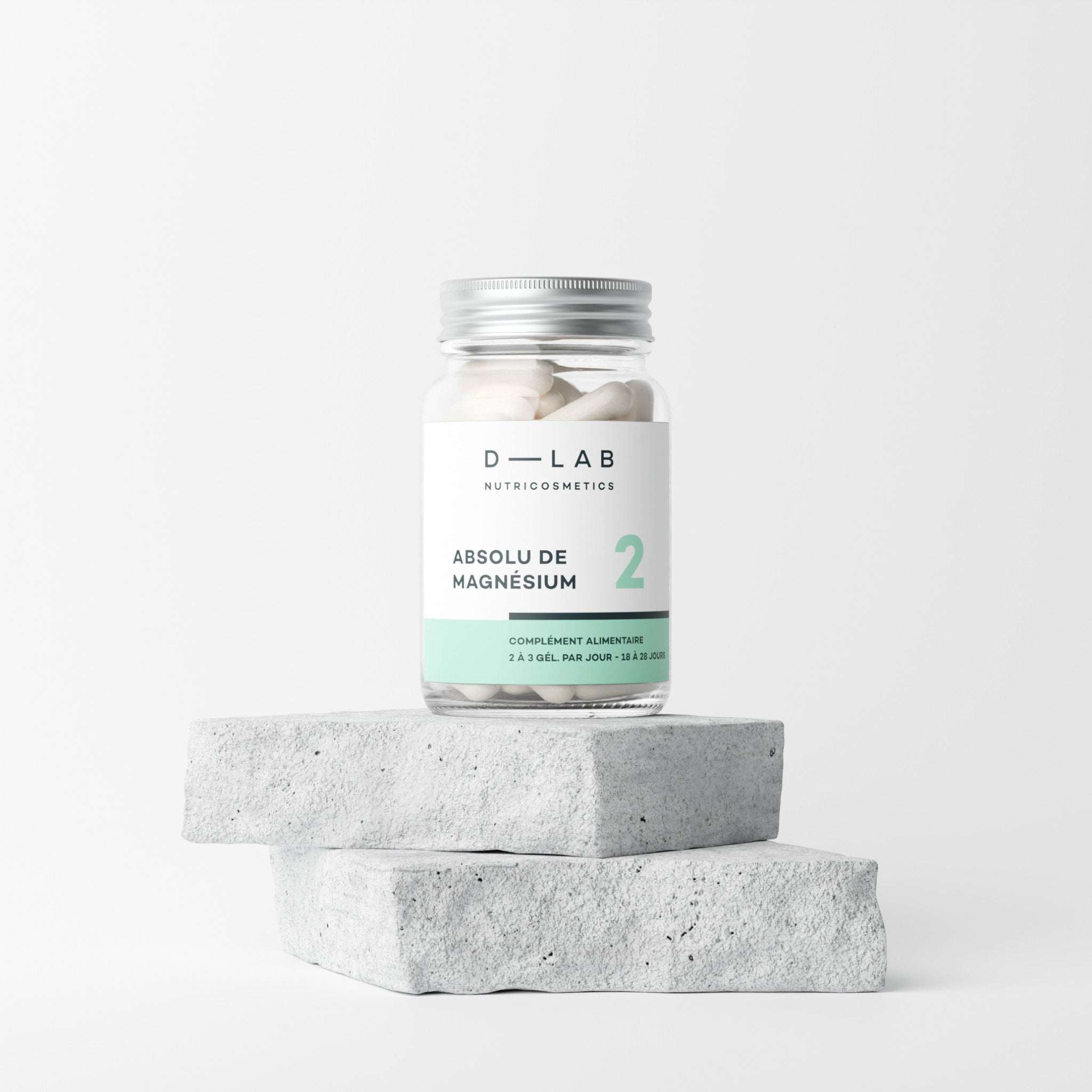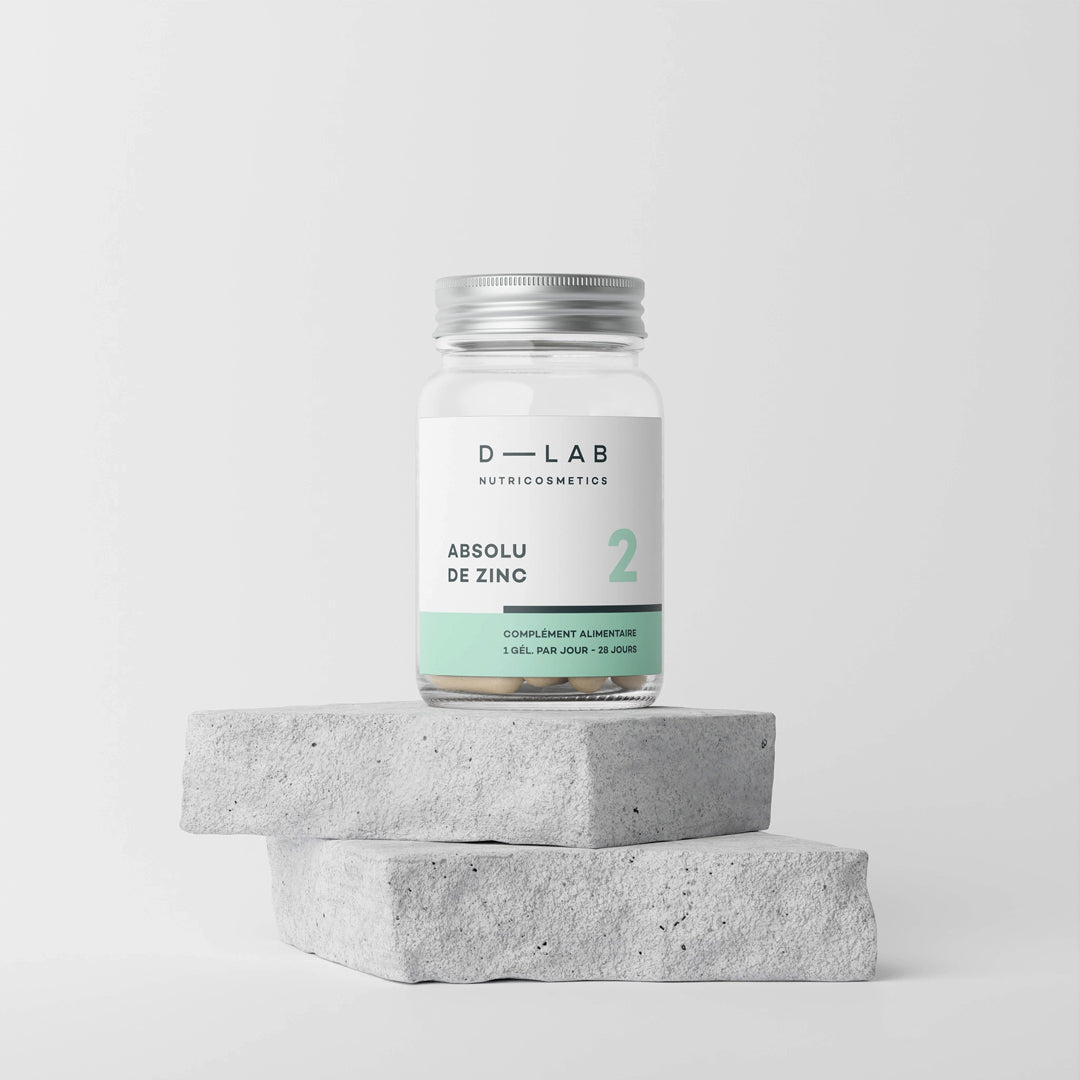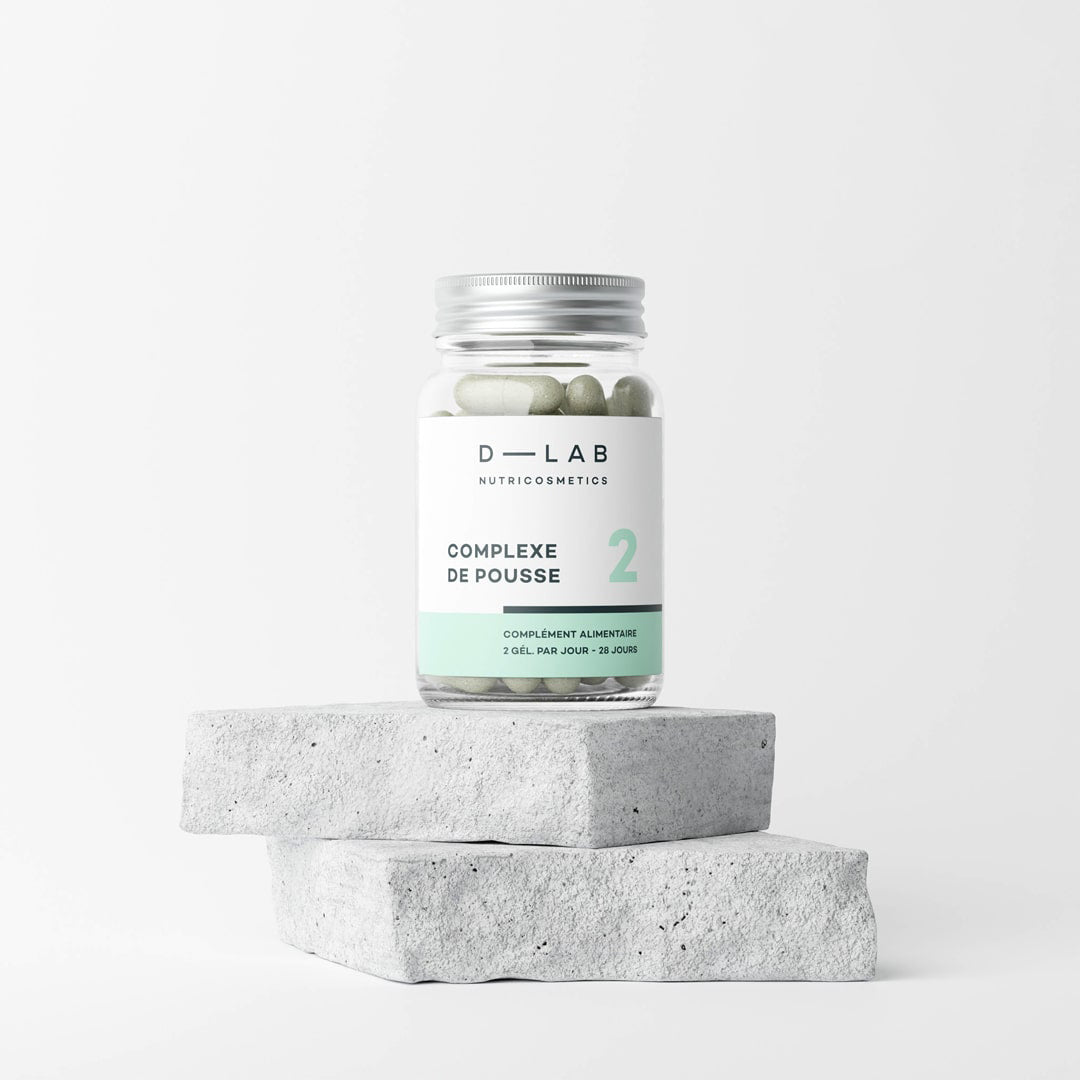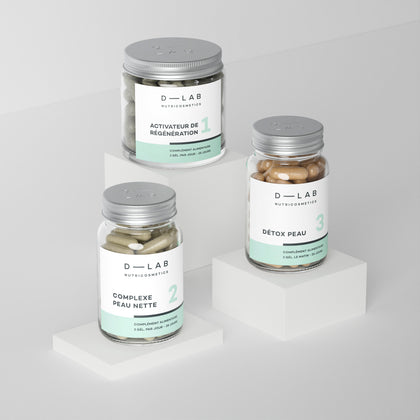
Stress, although a natural response of our body to situations perceived as threatening, can have harmful effects on the skin when it becomes chronic.
In fact, stress stimulates the release of certain hormones such as cortisol. The latter, known as the stress hormone, can cause breakouts by increasing the production of sebum, an oily substance that, when produced in large quantities, clogs the pores of the skin, creating an environment conducive to the proliferation of bacteria, which leads to the appearance of stress pimples on the face .
Therefore, understanding this link and the hormonal mechanisms at play is essential to better manage stress spots and preserve the health and beauty of the skin.
Summary
I. Understanding Stress Face Buttons
A. The link between stress and breakouts
Stress is not only detrimental to health, but it also has a negative impact on the skin!
Under stress, the nervous system releases adrenaline to respond to a threat, as well as cortisol, known as the "stress hormone."
Cortisol plays a crucial role in maintaining our daily bodily functions, such as regulating blood sugar and blood pressure, and fighting inflammation. However, problems arise when we face increased stress.
When we are stressed, cortisol triggers the release of glucose to stimulate the heart, lungs and muscles. During prehistoric times, this natural reaction helped prepare the body to flee from imminent danger.
Nowadays, although our living conditions are more pleasant, the function of cortisol remains the same. Therefore, increased stressful situations can affect sleep, cause weight gain and disrupt concentration.
B. The role of cortisol in the appearance of pimples
When it comes to the relationship between stress and acne, cortisol influences the sebaceous glands and sebum production. The latter can:
- when slowed, the skin becomes dry and tight, and red rashes form.
- Increased stress can clog skin pores, leading to a sudden breakout of pimples.
II. The biological mechanisms of stress buttons
A. The mechanisms of stress
Stress is a physiological reaction of our body when we perceive danger. It activates our orthosympathetic system to put us in a state of “survival”.
Stress triggers an overreaction in our body, either hyperactive (too much) or hypoactive (underactive).
Stress develops in three stages:
- The alert stage:
The resistance phase and the exhaustion stage (in case of continuous stress). The alert stage: the body reaches a maximum alert level, stimulated by the orthosympathetic system which releases adrenaline, the stress hormone, into the blood and nerve endings. There is muscle tension, increased heart rate and higher than normal blood pressure. This alert phase does not last more than 24 hours. This is what it feels like to be anxious.
- The adaptation:
During the adaptation phase, if stress persists and tranquility is not restored after the alarm phase, the body tries to resist by avoiding spending all its internal resources. The adrenal glands then produce an excessive amount of cortisol, our natural cortisone and endurance hormone. Instead of respecting natural production peaks (with a normal peak in the morning to last all day), the adrenals constantly release excess cortisol. This excess cortisol causes several disorders linked to this hormonal imbalance: increased blood sugar and fat levels, weakening of the immune system, sleep disorders, etc. This excess cortisol disrupts all biorhythms and hormonal functions.
- The failure phase:
It occurs when stress continues without any solution being found to relieve it. The body reactivates the alert phases by releasing adrenaline. This can lead to panic attacks, heart palpitations, high blood pressure... These problems can in the long term have major physical effects on the body and affect mental health, sometimes leading to depression, persistent anxiety and burnout.
B. Sebum production, skin inflammation and stress
Stress acts as a trigger, stimulating the sebaceous glands to produce more sebum, an oily substance naturally secreted to protect and moisturize the skin.
However, when this process is exacerbated, excessive sebum production can quickly become problematic. Indeed, this excess sebum can easily clog the pores of the skin, creating an environment conducive to the proliferation of bacteria.
It is this accumulation of bacteria, associated with excess sebum and dead skin cells, that leads to the formation of pimples. This is why it is essential to understand this mechanism to better manage stress face spots.
Additionally, chronic stress, by stimulating excessive cortisol production, leads to systemic inflammation. This inflammation, far from being harmless, can manifest itself as redness, swelling and rashes, thus aggravating skin conditions such as acne.
Indeed, inflammation is a natural immune response intended to protect the body, but when it is constant and uncontrolled, it can damage skin cells and promote the appearance of stress face pimples .
In this regard, using the precise and natural formulas offered by D-LAB NUTRICOSMETICS can help rebalance the hormonal system and soothe inflammation, for healthy and glowing skin despite stress.
C. Internal mechanisms linking stress and the appearance of pimples
Stress, by affecting the central nervous system, can cause hormonal imbalances which have notable consequences on the skin.
Indeed, stress can stimulate the production of cortisol, a hormone which in turn influences the production of sebum, an oily substance which can clog pores and promote the appearance of spots.
Additionally, stress can trigger immune responses that result in skin inflammation. At the same time, stress can weaken the skin barrier, making the skin more vulnerable to irritation and infection.
III. Identify stress buttons
A. Characteristics of stress buttons
Stress pimples on the face are often characterized by their suddenness and specific location. They may appear as small red bumps, blackheads or painful nodules. But, stress pimples can be everywhere! You can observe stress pimples all over your body, face but also scalp.
They are usually accompanied by redness and inflammation. These skin manifestations are a direct response to high stress levels, with the body releasing stress hormones that can disrupt the skin's balance.
The D-LAB NUTRICOSMETICS approach aims to rebalance these internal disorders, thanks to targeted food supplements.
B. Most affected areas of the face
The areas of the face most affected by stress pimples are generally the forehead, chin and jawline.
Indeed, these regions are equipped with a large quantity of sebaceous glands. These glands, under the influence of the stress hormone cortisol, can produce excess sebum, a natural oil that can clog skin pores if produced in large quantities.
It is this obstruction which then promotes the development of pimples. Therefore, these areas are more likely to break out during times of stress.
C. Red buttons and small buttons
Breakouts of small red pimples, often grouped together and painful to the touch, accompanied by redness and inflammation, are generally a sign of stress.
These skin manifestations, directly linked to a hormonal imbalance caused by an increase in the level of cortisol, the stress hormone, can be better managed through stress management, restful sleep, and above all, by not touching your skin too much. , already a victim of stress.
D. How to recognize stress buttons?
Depending on their origin, pimples caused by stress can manifest themselves in different ways:
Reddish spots Small rashes that are rough to the touch.
Acne: appearance of white, red pimples, subcutaneous cysts and blackheads.
Eczema patches are inflammatory lesions that cause intense itching and give the skin a rough, cardboard appearance.
Herpes, especially cold sores commonly known as cold sores.
Hives is characterized by red, circular, well-defined, raised eruptions.
Psoriasis manifests itself as white, dandruff-like flakes on the skin, associated with redness and itching. These symptoms are mainly localized on the arms, elbows, knees, lower back and scalp.
Seborrheic dermatitis: reddish-colored patches covered with white or yellow greasy scales.
Recognizing stress pimples requires careful attention to their sudden appearance and their specific location on the face.
Often, these spots are directly linked to periods of high emotional or physical tension, thus reflecting the inner imbalance.
It is beneficial to pay attention to the reactions of our body and skin in order to identify and eliminate potential triggers.
However, it is common for several factors to contribute to the situation. Therefore, to combat oily skin and skin imperfections, in addition to managing stress, it is recommended to follow several hygiene and diet tips: eat in a balanced way by limiting sugar intake, protect yourself from UV rays, use non-comedogenic cosmetic products, and hydrate sufficiently.
It should be noted that rhodiola is an adaptogenic plant often present in food supplements to help minimize the negative impact of stress on the body.
IV. Prevention and treatment of stress pimples
A. Natural solutions to treat pimples
Several natural solutions can help treat stress pimples.
Among these, tea tree oil stands out for its antibacterial and anti-inflammatory properties which help eliminate the bacteria responsible for pimples while soothing redness and inflammation.
The application of aloe vera, thanks to its healing and moisturizing properties, can also soothe inflammation, accelerate the healing of rashes and promote cell regeneration.
These natural solutions, combined with a healthy lifestyle and taking targeted food supplements like those offered by D-LAB NUTRICOSMETICS, can contribute to healthy and radiant skin.
B. Importance of nutrition
A balanced diet plays a crucial role in skin health. Pimples and diet are linked. Foods rich in antioxidants, vitamins and minerals can help reduce inflammation and maintain healthy skin.
Omega-3 fatty acids, found in oily fish and nuts, are particularly beneficial for skin health. A diet rich in fruits, vegetables, lean proteins and essential fatty acids can help prevent the appearance of stress pimples.
Anti-inflammatory foods, such as berries, green tea, and green leafy vegetables, are particularly beneficial for the skin.
C. Role of food supplements
Dietary supplements, like those offered by D-LAB NUTRICOSMETICS, can support skin health by providing essential nutrients that may be lacking in the daily diet.
The precise and powerful formulas, designed with a high level of expertise, are rich in vitamins A, C and E, as well as zinc and fatty acids. These key elements can help reduce inflammation and regulate sebum production, two crucial factors in the prevention and treatment of stress spots.
In addition, these 100% green and clean supplements respect the body and the environment.
D. What to do against stress spots and to reduce the impact of stress?
To combat stress pimples, it is essential to manage stress through relaxation techniques such as meditation, yoga or deep breathing.
Using the right skin care products, along with a balanced diet and supplements, can also help prevent and treat breakouts.
It is also recommended to maintain a healthy lifestyle by regularly engaging in physical activity, staying sufficiently hydrated and limiting the consumption of sugar and processed foods.
E. Natural remedies for stress pimples on the face
Remedies for stress pimples include using clay masks to absorb excess oil, as well as serums containing salicylic acid to exfoliate the skin and unclog pores.
Treatments with essential oils, such as tea tree oil, can also be effective in soothing inflammation and reducing redness.
Additionally, the application of aloe vera is beneficial for its healing and moisturizing properties.
V. D-LAB NUTRICOSMETICS formulas to manage stress and skin health
A. Precise and natural formulas
D-LAB NUTRICOSMETICS offers precise and natural formulas designed to act on the internal causes of skin problems. These food supplements are made with high quality ingredients, chosen for their effectiveness and bioavailability.
Read also: What are the best natural anti-stress remedies ?
Discover the range
B. Key ingredients and their benefits
The key ingredients in D-LAB NUTRICOSMETICS formulas are chosen for their naturalness and bioavailability. They include plant extracts, vitamins and minerals that work synergistically to support skin health.
For example, zinc, essential in the regulation of sebum production, plays a leading role in the prevention of stress face spots.
Antioxidants, like vitamin C, protect the skin against damage caused by oxidative stress, helping to maintain its radiance and vitality.
These precise and powerful formulas reflect the scientific expertise of D-LAB NUTRICOSMETICS and its commitment to inner beauty.
Frequently asked questions
How does stress cause facial blemishes?
Stress causes an increase in cortisol production, which stimulates the sebaceous glands and increases sebum production. Excess sebum can clog pores and encourage the appearance of spots.
What dietary supplements can help reduce stress pimples?
Dietary supplements rich in zinc, vitamins A, C and E, and omega-3 fatty acids can help reduce inflammation and regulate sebum production, helping to prevent and treat stress breakouts.
How to recognize a stress pimple on the skin?
A stress pimple is often characterized by its sudden appearance and its location on the forehead, chin or jaw. It can be red, painful and accompanied by inflammation.
What are the best natural methods to treat stress pimples?
Natural methods for treating stress pimples include using essential oils like tea tree oil, applying aloe vera to soothe inflammation, and using clay masks to absorb skin. excess sebum.
Stress-related pimples in adults
Adults can also suffer from stress-related pimples, often found on the forehead, chin and jaw. Chronic stress can unbalance hormones and increase oil production, leading to breakouts.
How to remove stress pimples on the face?
To remove stress pimples, it is recommended to follow a suitable skin care routine, use soothing and anti-inflammatory products, and manage stress through relaxation techniques.
Does fatigue cause pimples?
Fatigue can contribute to breakouts by weakening the immune system and increasing stress. A healthy lifestyle and sufficient sleep are essential to maintaining healthy skin.
What are the natural solutions to fight against the appearance of spots linked to stress?
Natural solutions to combat the appearance of stress-related spots include the use of essential oils, the application of aloe vera, and the adoption of a diet rich in antioxidants and omega-3 fatty acids.
What food supplements can help counter the effects of stress on the skin?
Dietary supplements containing zinc, vitamins A, C and E, and omega-3 fatty acids can help counter the effects of stress on the skin by reducing inflammation and regulating sebum production.
How can natural ingredients help prevent and treat spots caused by stress?
Natural ingredients such as aloe vera, tea tree oil, and chamomile extracts can soothe inflammation and reduce the appearance of spots. Plant-based products, rich in antioxidants and soothing agents, are particularly effective in treating stressed skin.
How can we reduce the impact of stress on the skin?
To reduce the impact of stress on the skin , it is important to regularly engage in relaxing activities and maintain a proper skin care routine. Moisturizing and using soothing products can help strengthen the skin barrier and reduce inflammation.
Can we prevent the appearance of stress spots through nutrition?
Yes, a balanced diet rich in fruits, vegetables, lean proteins and essential fatty acids can help prevent the appearance of stress pimples. Anti-inflammatory foods, such as berries, green tea, and green leafy vegetables, are particularly beneficial for the skin.
What is the relationship between the stress hormone cortisol and the appearance of spots?
Cortisol, the stress hormone, influences the appearance of spots by increasing sebum production and exacerbating skin inflammation. This hormone can also disrupt hormonal balance, which can cause breakouts.
What are the internal mechanisms linking stress and the appearance of spots?
Stress affects the central nervous system, which in turn influences hormone production and immune responses. These internal responses can cause skin changes such as increased sebum production and inflammation. Additionally, stress can weaken the skin barrier, making the skin more vulnerable to irritation and infection.



























